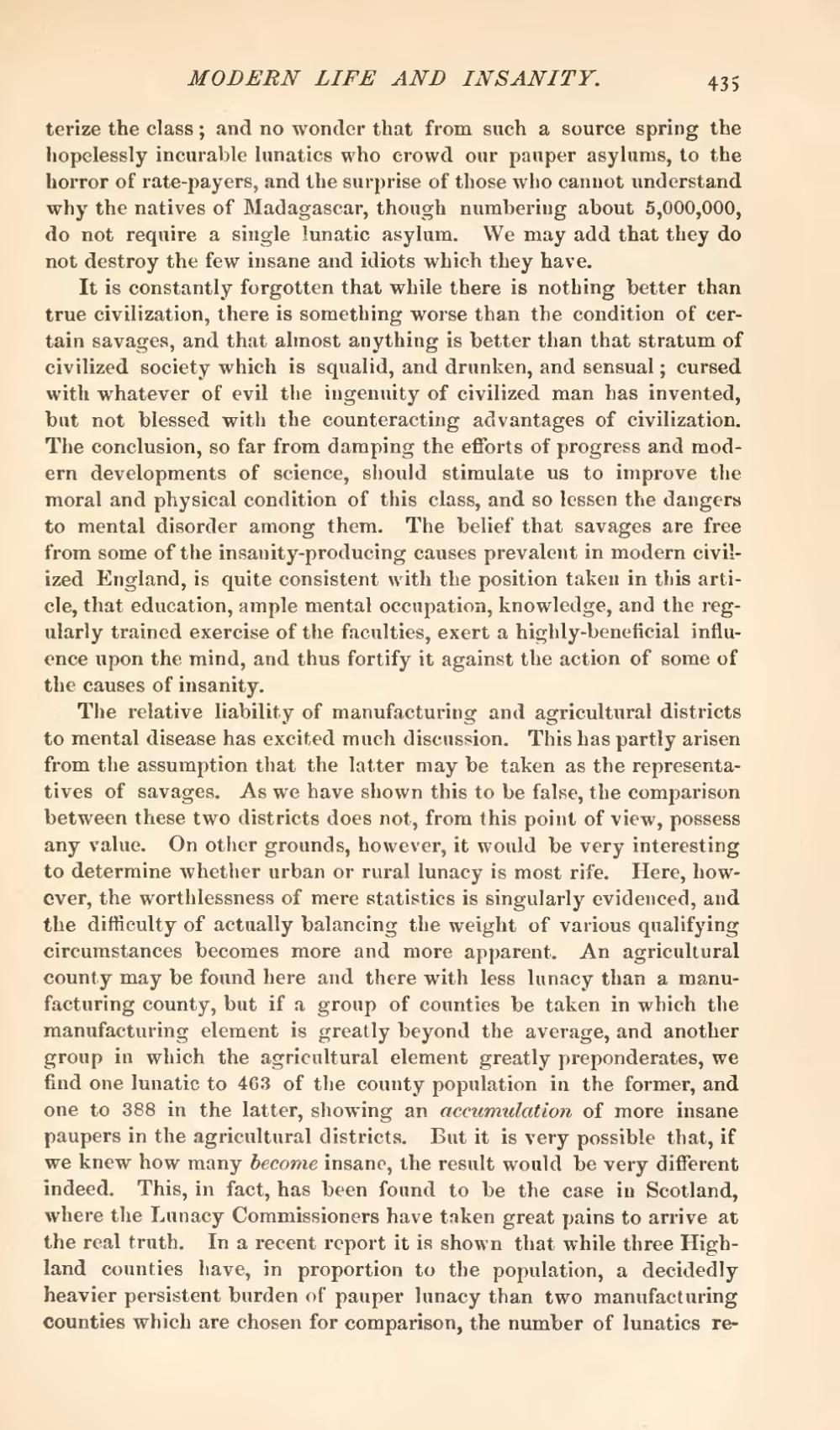terize the class; and no wonder that from such a source spring the hopelessly incurable lunatics who crowd our pauper asylums, to the horror of rate-payers, and the surprise of those who cannot understand why the natives of Madagascar, though numbering about 5,000,000, do not require a single lunatic asylum. We may add that they do not destroy the few insane and idiots which they have.
It is constantly forgotten that while there is nothing better than true civilization, there is something worse than the condition of certain savages, and that almost anything is better than that stratum of civilized society which is squalid, and drunken, and sensual; cursed with whatever of evil the ingenuity of civilized man has invented, but not blessed with the counteracting advantages of civilization. The conclusion, so far from damping the efforts of progress and modern developments of science, should stimulate us to improve the moral and physical condition of this class, and so lessen the dangers to mental disorder among them. The belief that savages are free from some of the insanity-producing causes prevalent in modern civilized England, is quite consistent with the position taken in this article, that education, ample mental occupation, knowledge, and the regularly trained exercise of the faculties, exert a highly-beneficial influence upon the. mind, and thus fortify it against the action of some of the causes of insanity.
The relative liability of manufacturing and agricultural districts to mental disease has excited much discussion. This has partly arisen from the assumption that the latter may be taken as the representatives of savages. As we have shown this to be false, the comparison between these two districts does not, from this point of view, possess any value. On other grounds, however, it would be very interesting to determine whether urban or rural lunacy is most rife. Here, however, the worthlessness of mere statistics is singularly evidenced, and the difficulty of actually balancing the weight of various qualifying circumstances becomes more and more apparent. An agricultural county may be found here and there with less lunacy than a manufacturing county, but if a group of counties be taken in which the manufacturing element is greatly beyond the average, and another group in which the agricultural element greatly preponderates, we find one lunatic to 463 of the county population in the former, and one to 388 in the latter, showing an accumulation of more insane paupers in the agricultural districts. But it is very possible that, if we knew how many become insane, the result would be very different indeed. This, in fact, has been found to be the case in Scotland, where the Lunacy Commissioners have taken great pains to arrive at the real truth. In a recent report it is shown that while three Highland counties have, in proportion to the population, a decidedly heavier persistent burden of pauper lunacy than two manufacturing counties which are chosen for comparison, the number of lunatics re-
